Extremely Rare and Influential Set of Sixteenth Century Celestial Globe Gores – The Primary Model for Many Globes Engraved in Silver and Gilt-Brass in the Sixteenth Century
Nice example of Francois Demongenet's second set of celestial globe gores, one of the most influential sets of gores of the sixteenth century. They served as the primary model for globes engraved by gold and silversmiths in the sixteenth century, although a surviving set of gores is very rare. Click here to see the terrestrial counterpart to this celestial example. It was this novel celestial globe that made Demongenet influential amongst his colleagues across Europe.
Presented in a set of twelve gores, Demongenet first created a pair of globe gores in 1552 in woodcut. The second set of gores from ca. 1560, of which this is an example, was engraved on copper. The second set seem to have been influenced by the work of Gemma Frisius, particularly his celestial globe of 1537.
If constructed, these gores would form a globe roughly 3.5 inches in diameter. One of two small cartouches bears a dedication to Claude de la Baume, Archbishop of Besancon, the highest-ranking religious official near Vesoul, where Demongenet lived. The second cartouche features Demongenet's own name.
The Demongenet Tradition
Elly Dekker identifies a “Demongenet Tradition” within sixteenth century globe making. In addition to globes made of paper and pasted around spheres, some globes were engraved in metal. These were called manuscript globes and were intended more as luxurious decorations than as geographical aids. Most of the manuscript globes were made by men outside the map trade and followed the geography provided by masters, usually Mercator.
The Demongenet gores, or at least his second set of gores dating from ca. 1560, influenced an entire tradition of manuscript globes. For the terrestrial globe, they seem to have gained their geographic information from Gemma Frisius’ 1536 terrestrial globe. Evidence for this includes the phrase Devicta anno 1530 in North America; the phrase reads “Hispania Maior a Nuñno Gusmano devicta anno 1530” on the Frisius globe. Additionally, the particular location and spelling of Japan (derivates of Sipango) originated from Frisius, along with unusual terminology for the tropics.
The avenue by which they reached Demongenet seems to have been Georg Hartmann’s 1547 terrestrial globe gores, which also include the Frisius information and the strange islands near Java of Griforum insulae, or Gryforum insulae as it is included on the Demongenet gores. Demongenet’s gores went on to influence other terrestrial globemakers, including Georg Roll and Johann Reinhold, as well as Nicolas Spirinx.
It is Demongenet’s accompanying celestial gores which cemented his influence with fellow globe makers. Demongenet chose to include only one of the two constellations introduced by Caspar Vopel in 1536; Antinous is on the globe, Coma Berenices is not. A male figure, usually called Acarnar, is positioned at the end of Eridanus. Boötes is shown with his hounds, while a magnitude table is placed near Ursa Major. The sources for these features vary but include Peter Apian (hounds, magnitude table) and Frisius (magnitude table). The male figure at the end of Eridanus and the inclusion of Antinous are largely original choices by Demongenet.
These choices would be copied throughout the sixteenth century. In particular, Acarnar would be depicted as male instead of female as previously shown on celestial globes, including on the 1552 Demongenet gores. The hounds and the magnitude table were already on the 1552 gores. Demongenet’s influential celestial gores would be copied and inspired other globemakers until the mid-seventeenth century in France, Italy, and Germany.
The Demongenet gores and their rarity
The history of this Demongenet pair is somewhat of a mystery. The gores were obviously very popular in its time, serving as a model for numerous other globe makers. However, few globes or gores survive. At least four different copperplates were created of the terrestrial globe gores, two of which are known in two states.
All examples of Demongenet's gores are rare. We note only a single example of the gores in a dealer catalogue in the past thirty years. In Arkway Catalog 67 (2005), entry #15, this same set of gores is described and priced at $46,000 (almost certainly the same set, as the description is identical and also notes a matching set of small wormholes in the celestial gores). These gores are therefore extremely rare and influential within the history of cartography.









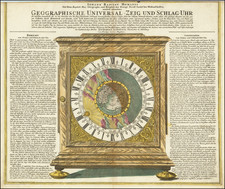
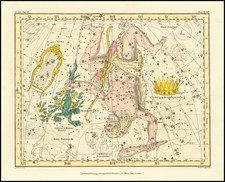
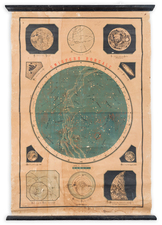
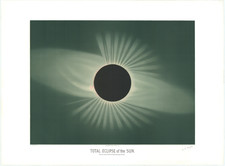
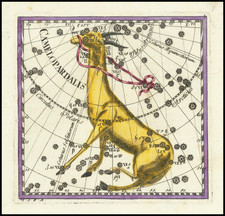
![[Auriga]](https://storage.googleapis.com/raremaps/img/small/83182.jpg)